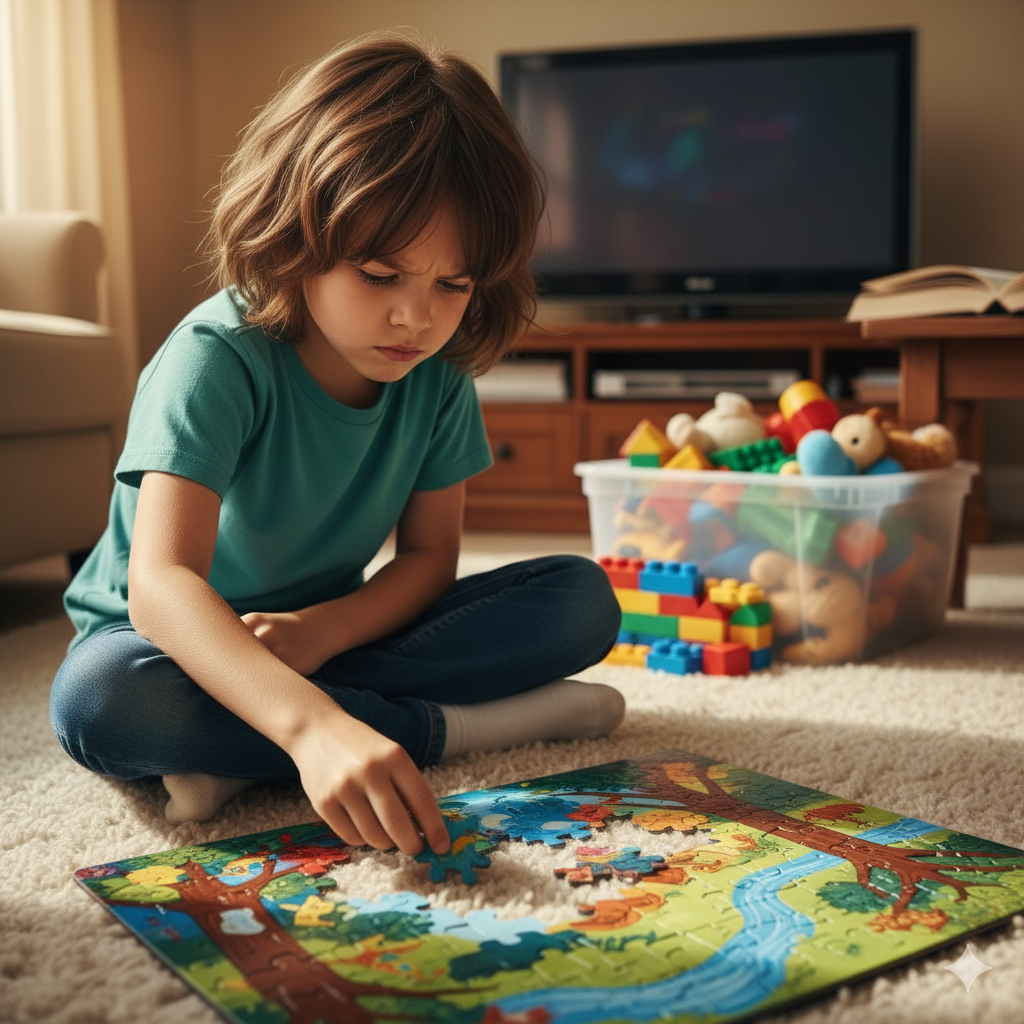Understanding ADHD
Attention-Deficit/Hyperactivity Disorder (ADHD) is a
neurodevelopmental condition characterized by persistent
patterns of inattention, hyperactivity, and impulsivity that
interfere with development and functioning. While it is common
for all children to be energetic or distracted at times, for a
child with ADHD, these behaviors are more severe, occur more
often, and impact their ability to thrive in social and academic
settings.

Common Characteristics
ADHD presents differently in each child, but often involves
challenges in three main areas:
-
Inattention: Difficulty sustaining focus,
seeming not to listen, being easily distracted, and struggling
with organization and completing tasks.
-
Hyperactivity: Constant fidgeting or
squirming, inability to stay seated, excessive running or
climbing, and feeling restless.
-
Impulsivity: Acting without thinking,
interrupting others, difficulty waiting for their turn, and
making hasty decisions.
How We Support Your Child
Our goal is to give children with ADHD the tools they need to
manage their symptoms and harness their strengths. Our support
includes:
-
Behavioral Therapy: Teaching strategies for
self-monitoring, emotional regulation, and impulse control. We
work with both the child and parents to create effective
reward systems and routines.
-
Executive Function Coaching: Direct
instruction and practice in skills like planning,
organization, time management, and starting tasks.
-
Occupational Therapy: For children who
struggle with sensory processing or motor coordination
alongside ADHD, OT can help improve body awareness and focus.
-
Parent and School Collaboration: We provide
guidance to families and collaborate with teachers to ensure
strategies are consistent across all environments.
Our Aim and Achievements
We aim to help children see ADHD not as a deficit, but as a
different way of thinking that comes with unique strengths.
Success is measured by:
-
Improved academic performance and ability to complete
schoolwork.
-
Better management of daily routines and responsibilities.
-
Positive changes in social interactions and reduced conflict
with peers.
-
Increased self-esteem and confidence in their own abilities.
-
A family environment that is more structured, calm, and
supportive.
